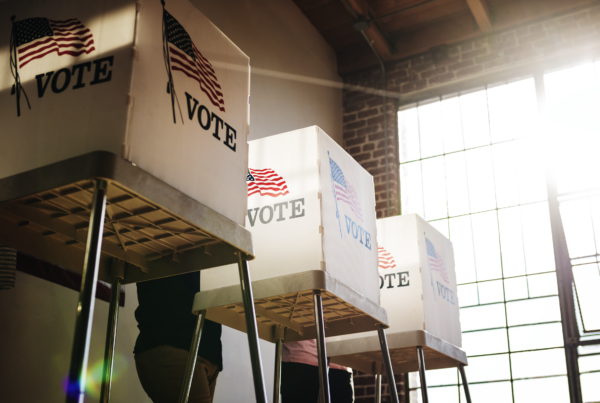O’Rourke campaign largest digital spender by far;
At least $4 million on digital ad spending in tight Senate races
![]()
![]()
(MIDDLETOWN, CT) September 13, 2018 – Though campaigns still spend the majority of their ad dollars on television advertising, digital advertising has become an increasingly important component of campaigns’ ad strategies. The Wesleyan Media Project’s latest analysis compares television ad spending with digital ad spending in 14 of the most competitive U.S. Senate races, finding at least $4 million in spending on digital advertising since the end of May.
Table 1 shows estimated spending by the Democratic and Republican nominee in each competitive U.S. Senate race from May 31, 2018 to September 3, 2018. Totals are broken down by party (looking only at the party nominee’s spending) and source (television, Facebook and Google Ad Services). Television estimates come from Kantar/CMAG, Facebook estimates come from Pathmatics, while Google spending comes from the company’s Transparency Report website.
One race that stands out is the Texas Senate race, where Democrat Beto O’Rourke has spent an estimated $2.1 million on Facebook advertising since the end of May, along with $386,000 for advertising on Google. While digital spending in Texas is off the charts, there has also been heavy digital spending by Republican Rick Scott in Florida (over $600,000) and by Democrat Phil Bredesen in Tennessee (over $400,000).
![]()
Table 1: Senate Candidate Spending on TV vs. Digital by Party and State
| Dem TV $s | Dem FB $s | Dem Google $s | Rep TV $s | Rep FB $s | Rep Google $s |
|
|---|---|---|---|---|---|---|
| Arizona | 2,264,850 | 105,400 | 67,900 | 1,461,220 | 64,300 | 19,300 |
| Florida | 511,820 | 74,800 | 242,600 | 13,074,560 | 3,800 | 634,100 |
| Indiana | 1,449,680 | 13,700 | 11,300 | 1,585,250 | 40,400 | 9,400 |
| Minnesota* | 770,920 | 61,400 | 15,400 | 197,750 | 0 | 15,800 |
| Missouri | 2,773,790 | 73,600 | 178,600 | 486,570 | 1,900 | 69,800 |
| Montana | 1,306,240 | 45,800 | 29,600 | 217,810 | 49,300 | 4,400 |
| Nevada | 2,973,680 | 63,000 | 119,600 | 1,375,880 | 56,400 | 33,300 |
| N. Dakota | 991,470 | 152,800 | 56,300 | 866,490 | 19,200 | 10,700 |
| Pennsylvania | 1,108,620 | 110,600 | 39,400 | 107,030 | 1,300 | 5,500 |
| Ohio | 2,308,250 | 62,400 | 12,800 | 0 | 2,200 | 900 |
| Tennessee | 2,646,880 | 226,400 | 199,400 | 1,142,420 | 11,400 | 150,900 |
| Texas | 2,231,140 | 2,136,500 | 386,600 | 65,750 | 216,500 | 23,500 |
| W. Virginia | 507,030 | 600 | 0 | 0 | 1,700 | 5,500 |
| Wisconsin | 2,290,490 | 32,700 | 136,000 | 233,040 | 1,700 | 8,400 |
| Total | 24,134,860 | 3,159,700 | 1,495,500 | 20,813,770 | 470,100 | 991,500 |
| * Smith v. Housley race Figures are from May 31, 2018, to September 3, 2018. Advertising on platforms other than Facebook and Google Ad Services is not included, and thus estimates of digital spending are low. CITE SOURCE OF DATA AS: Kantar/CMAG (television spending), Pathmatics (Facebook spending) and Google (Google Ad Services’ transparency report spending) with analysis by the Wesleyan Media Project. |
||||||
Table 2 reports the percentage of ad spending (television plus the two digital platforms) that is devoted to digital. Across all races, an average of 10.6 percent of ad spending was on Facebook and Google Ad Services. Because our data do not cover other ad providers, such as Twitter, or direct ad buys, such as with a newspaper’s website, the percentage of ad dollars going to digital is undoubtedly higher than this.
![]()
“Digital advertising by campaigns cannot be ignored anymore,” said Travis Ridout, co-director of the Wesleyan Media Project. “That said, campaigns continue to pump large sums into advertising on broadcast television, and its oft-predicted demise is still far off.”
![]()
The extent to which candidates are investing in digital is quite varied. Almost all of Joe Manchin’s ad dollars in West Virginia have gone to television. Indiana’s Joe Donnelly and Ohio’s Sherrod Brown have also placed most of their spending on television. By contrast, Bill Nelson of Florida, Matt Rosendale of Montana, Beto O’Rourke of Texas and Ted Cruz of Texas have placed heavy bets on digital advertising. Although Republican candidates in Ohio and West Virginia have devoted all of their ad dollars to digital, those sums are low, and they have yet to invest in any television ads.
![]()
Table 2: Percentage of Campaign Ad Spending on Digital
| Dem Digital % | Rep Digital % | Total Digital % |
|
|---|---|---|---|
| Arizona | 7.1% | 5.4% | 6.4% |
| Florida | 38.3% | 4.7% | 6.6% |
| Indiana | 1.7% | 3.0% | 2.4% |
| Minnesota* | 9.1% | 7.4% | 8.7% |
| Missouri | 8.3% | 12.8% | 9.0% |
| Montana | 5.5% | 19.8% | 7.8% |
| Nevada | 5.8% | 6.1% | 5.9% |
| North Dakota | 17.4% | 3.3% | 11.4% |
| Pennsylvania | 11.9% | 6.0% | 11.4% |
| Ohio | 3.2% | 100.0% | 3.3% |
| Tennessee | 13.9% | 12.4% | 10.3% |
| Texas | 53.1% | 78.5% | 54.6% |
| West Virginia | 0.1% | 100.0% | 1.5% |
| Wisconsin | 6.9% | 4.2% | 6.6% |
| Total | 15.0% | 6.2% | 10.6% |
| * Smith v. Housley race Figures are from May 31, 2018, to September 3, 2018. Advertising on platforms other than Facebook and Google Ad Services is not included, and thus estimates of digital spending are low. CITE SOURCE OF DATA AS: Kantar/CMAG (television spending), Pathmatics (Facebook spending) and Google (Google Ad Services’ transparency report spending) with analysis by the Wesleyan Media Project. |
|||
About This Report
Data reported here from Kantar Media/CMAG do not cover local cable buys, only broadcast television, national network and national cable buys. Spending on Facebook advertising comes from estimates generated by Pathmatics, a market intelligence firm. The company tracks paid advertising in the mobile Facebook newsfeeds of their opt-in panel, which consists of hundreds of thousands of users who reflect the diversity of active Facebook users. Data on Google Ad Services comes from their Transparency Report.
The Wesleyan Media Project (WMP) provides real-time tracking and analysis of political advertising in an effort to increase transparency in elections. Housed in Wesleyan’s Quantitative Analysis Center – part of the Allbritton Center for the Study of Public Life – the Wesleyan Media Project is the successor to the Wisconsin Advertising Project, which disbanded in 2009. It is directed by Erika Franklin Fowler, associate professor of government at Wesleyan University, Michael M. Franz, professor of government at Bowdoin College and Travis N. Ridout, professor of political science at Washington State University. WMP staff include Laura Baum (Project Manager), Dolly Haddad (Project Coordinator) and Matthew Motta (Research Associate).
The Wesleyan Media Project is supported by Wesleyan University and the John S. and James L. Knight Foundation. Data are provided by Kantar Media/CMAG with analysis by the Wesleyan Media Project. WMP is partnering again this year with the Center for Responsive Politics, to provide added information on outside group disclosure.
Periodic releases of data will be posted on the project’s website and dispersed via Twitter @wesmediaproject. To be added to our email update list, click here.
For more information contact:
mediaproject@wesleyan.edu
About Wesleyan University
Wesleyan University, in Middletown, Conn., is known for the excellence of its academic and co-curricular programs. With more than 2,900 undergraduates and 200 graduate students, Wesleyan is dedicated to providing a liberal arts education characterized by boldness, rigor and practical idealism. For more, visit wesleyan.edu.
About the John S. and James L. Knight Foundation
Knight Foundation is a national foundation with strong local roots. We invest in journalism, in the arts, and in the success of cities where brothers John S. and James L. Knight once published newspapers. Our goal is to foster informed and engaged communities, which we believe are essential for a healthy democracy.




